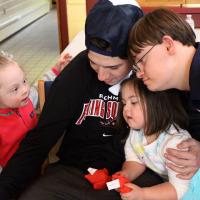At the beginning of the year we get to create our classroom community. We get to decide how we will learn and grow and play with each other for the rest of the year. This is a new beginning for all. As we start to decide what kind of classroom community we are going to be, we begin by thinking about the importance of the words we use with each other.
- Read more about Engaging in Critical Conversations
- Log in or register to post comments
